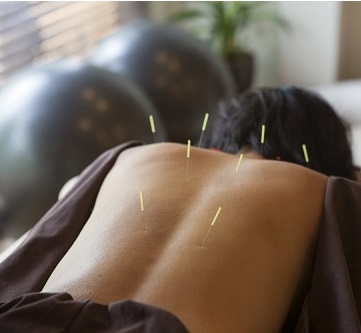Acupuncture

Acupuncture (from the Latin “acus” meaning needle and “puncture” meaning to pierce), is the practice of using very thin needles to pierce the skin. It is a form of treatment that is a key component in the practice of Traditional Chinese Medicine with evidence of it’s use dating back to 100 B.C.
In the 1970’s, Dr. Felix Mann began to research the scientific mechanism behind which acupuncture has been so effective, having studied Chinese acupuncture extensively. Through his research, we know that acupuncture has a profound effect on the nervous system as well as the muscles directly.
As a needle is inserted, there is an initial local response, increasing blood flow to the tissues and skin surrounding the needle. This helps expedite the healing process in the area being treated. Signals are sent from the point of insertion through the nervous system, to the spinal cord and inevitably to the brain. Here they have an analgesic effect on the segment of the body that the signal comes from as well as having a calming effect and pain relief throughout the entire body.
At the local level, acupuncture can also release muscular trigger points that are often the cause of local and referred pain.
The purpose of acupuncture is to help alleviate pain and/or symptoms caused by a specific health condition or injury.
Common Uses of Acupuncture
Frequently Asked Questions
-
Acupuncture, with a trained professional, is extremely safe with very little risk of an adverse event. The needles used for acupuncture are sterilized, individually packaged and disposable (single use only). This drastically decreases any chance of infection. Patients that have a bleeding disorder or are currently on blood thinners should make their practitioner aware prior to treatment. This may increase the chance of post-treatment bruising but still demonstrates very little risk to these patients.
-
The sensation experienced during acupuncture varies depending on the targeted structures in your treatment regimen. In many cases, patients report feeling no discomfort upon needle insertion. However, if the treatment targets an acutely painful area, a trigger point, or a specific nerve, some initial discomfort may occur but usually diminishes rapidly. Several factors such as anxiety, lack of sleep, recent trauma, or dehydration can contribute to heightened pain perception during acupuncture.
-
Everyone has a different experience with acupuncture, as with any form of treatment, depending on the goal of treatment and the condition being treated. Most commonly patients experience an improvement in pain levels and mobility immediately following treatment, while some may not notice any changes for 2-3 days. Relaxation, tiredness, and soreness/achiness are the most reported side effects post-treatment. Occasionally there is a small amount of bleeding (droplet) with removal of the needle from the skin.
-
Acupuncture needles come in a variety of lengths ranging from 0.5 inches to 3 inches. The structure being targeted typically determines which length your practitioner may decide to use. For example, a larger muscle group, such as the hamstring, would likely require a 2-to-3-inch needle. A shallower structure like the ear or knuckles of the hand would likely require a 0.5 to 1 inch needle to effectively reach the targeted area.
-
Your clinician will create a treatment plan based on your specific concerns and health history. Typical treatment plans are once a week for 5-6 weeks but may be more frequent for patients with acute pain or injury. Some patients will use acupuncture preventatively and schedule regular appointments throughout the year to maintain optimal health and function.


